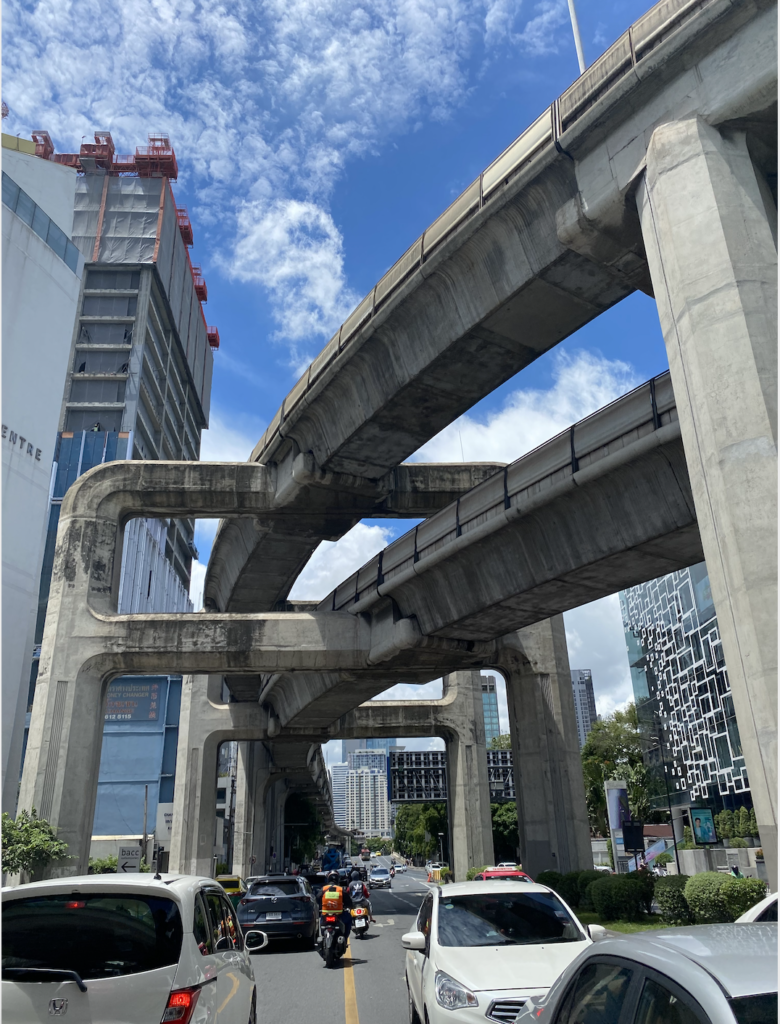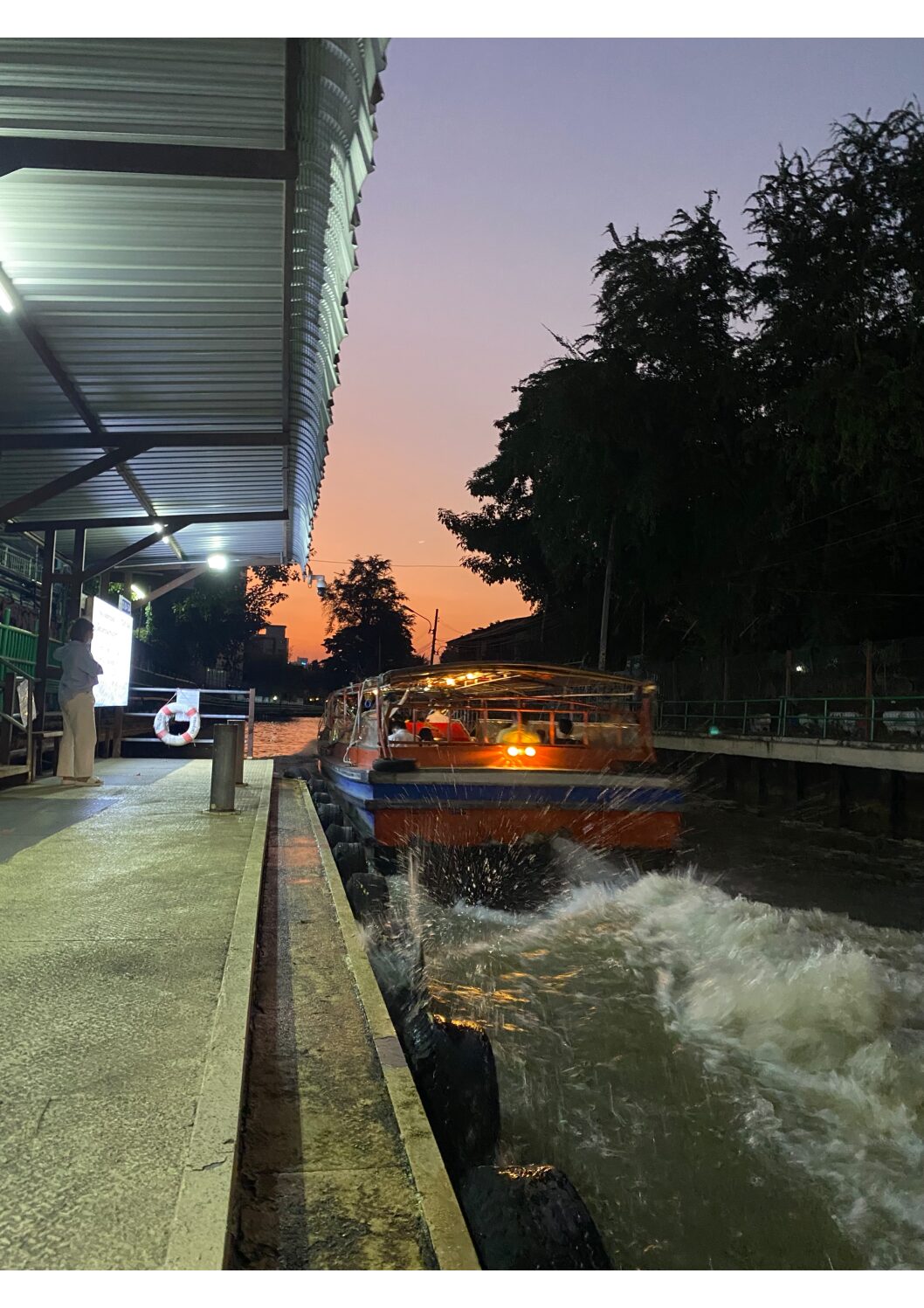Introduction
Thailand’s capital, Bangkok, experienced a rapid expansion, which was accompanied
by exponential population growth, to the point that Bangkok’s population makes up
approximately 13% of Thailand’s total population (Bangkok Population 2022
(Demographics, Maps, Graphs), n.d.). This fast development was mainly a product of the
capital’s modernization from the early 2000s onwards, and as Bangkok’s urbanization is
very fragmented, with 60% of the populated area being based outside of the city’s
metropolitan area, the government received the complicated task of dealing with
infrastructure problems (World Bank Group, 2015). Optimal urban planning in Bangkok is a
complex topic as the city faces several problems such as inequality, ageism, pollution and
congestion. Therefore, finding the most feasible solution that aims to be practical, reduce the
city’s pollution and traffic jam problems is a task that involves different perspectives on the
topic and should be handled with care in order to satisfy the future needs of the capital to
strive efficiently. Since the government is putting a strong emphasis on the development of
mass transit railway systems, I will discuss this further in my essay, and hence, my thesis
statement is rail mass transit systems should be incorporated into Bangkok’s infrastructure
plan to address the problems of pollution and congestion.
BTSG and their goals
The BTS group is a privately owned business that is divided into four units and one of
these units makes up the mass transit sector, which makes SkyTrain operations in Thailand
possible. In 1999, the first SkyTrain has been constructed and, over a short period of time, this
means of transport has alleviated its importance crucially. Today SkyTrains are a major form
of transport in Thailand’s capital and keep on growing. BTSG is the first railway company in
the world that gained the certificate of being carbon neutral, and the firm holds on to its
goals of improving its energy efficiency by seeking other energy sources that can be used in a
way that allows BTSG to operate more on renewable energy sources. A company that has
such a perspective on the infrastructure development of Bangkok can assist the city in its path
to becoming more environmentally friendly. The Thai government has established strict rules
and guidelines for green infrastructure that demands cooperation from all parties. As a result,
this project could be a beneficial tool for moving accountability to people, as this is often a
part that lacks focus in the discussion of sustainable development. Furthermore, the mass
railway systems offer a solution to congestion issues in Bangkok as well, since it shifts
transport away from the densely occupied roads and it offers more safety to the older
population of Bangkok, which is valuable to decrease Bangkok’s traffic fatality rates.
However, the company’s chief investment officer and head of sustainability stated that
Bangkok’s municipalities are not really maximizing this type of transportation, which could
be caused by the contrasting views on this topic. Thus, for this form of transport to operate
efficiently and satisfy all the expectations, all the parties should be on the same page and
evenly contribute to its development (Nation, 2022).

Addressing sustainability problems and striving for efficiency
The major pollution sources in Bangkok are diesel fumes and agricultural burning,
which makes me think that investing more in water transport is not the most suitable idea
to tackle the pollution problems the city is facing. Moreover, the existing boats play an
important role in Bangkok’s transport, but these are powered by diesel engines that worsen
the air quality in the city. The fumes these boats release are composed for a big part of black
carbon, which is a key factor in the fatality rates of citizens caused by pollution (As
Bangkok’s Air Pollution Reaches Dangerous Levels, Researchers Are, n.d.). On the other
hand, the boat system addresses the congestion problem in the capital, but since the routes are
confined to the existing network of rivers, it does not have the same reach as the mass transit
network. In order for the boats to have the same reach as land transport, rivers should be
dug, which in my opinion looks undoable. If municipalities aim to address the congestion
problems by utilising the water system, they should subsidize more ecologically friendly
motorisation as well, which implies a lot of work and difficulties. If the State Railway of
Thailand, also called the SRT, can present more competitive advantages for the mass transit
system over the competing types of transport, the trouble of congestion and pollution can be
solved by investing in rail mass transit systems (Pomlaktong & Ongkittikul, 2008).
Optimal investment or misguided outlooks?
In a Bangkok Post article, a freelance economist explains various reasons why the
rail mass transit system is not the solution to Bangkok’s problems. His main point is that
these systems, despite their usefulness, are far from being cost-effective, as investing in these
will incur future losses and high operating costs. The purple line has an annual operating loss
of 3 billion bath since this mode of transport is not as user-friendly as other modes of
transport. Instead of paying a bus fare of 8 baht, people have to pay 37 baths for a train fare,
which in a country with extreme levels of inequality, is a big complication. Furthermore, the
construction costs of SkyTrains imply tremendous investments with money that the
government does not have because of financial problems, hence, they have to seek loans.
Building these networks causes the failure of secondary cities in Thailand to address their
infrastructure problems (Parasuk, 2019). From my personal experience, I enjoy using the
SkyTrain, but I live in Bangrak and the limited availability of SkyTrains here restricts me to use Grab or taxis most of the time.
Conclusion
Rail mass transit systems should be incorporated into Bangkok’s infrastructure plan
to address the problems of pollution and congestion. Mass rail transit networks are a good
and innovative alternative to other modes of transport. It offers the ability to combat climate
change and bottleneck problems. However, developing Bangkok’s infrastructure in a way that
mass transit systems can flourish and satisfy everyone’s expectations, requires supportive
regulations and policies together with more affordable prices. This would result in more
budget for secondary cities and other necessary investments together with more utilization of
the transport mode, which could subsequently solve the operating losses it faces annually.
Last, by the rate at which the rail mass transit system expands, I believe that its availability
problem will be tackled soon. Public cooperation is therefore of major importance.
References
As Bangkok’s air pollution reaches dangerous levels, researchers are. (n.d.). Climate
& Clean Air Coalition. Retrieved November 6, 2022, from
https://www.ccacoalition.org/en/news/bangkok%E2%80%99s-air-pollution-reaches-dangerou
s-levels-researchers-are-working-determine-how-boats
Bangkok Population 2022 (Demographics, Maps, Graphs). (n.d.). Retrieved
November 6, 2022, from https://worldpopulationreview.com/world-cities/bangkok-population
Nation, T. (2022, September 2). BTS Group strives towards sustainable operation,
driving Thailand forward to Net-zero emission by 2065. Nationthailand.
https://www.nationthailand.com/pr-news/business/pr-news/40019640
Parasuk, C. (2019, April 11). The creaking burden of infrastructure.
https://www.bangkokpost.com/opinion/opinion/1659944/the-creaking-burden-of-infrastructur
e.
Pomlaktong, N., & Ongkittikul, S. (2008). Infrastructure Development in Thailand.
Thailand Development Research Institute, Chapter 9, 278.
https://www.eria.org/uploads/media/Research-Project-Report/RPR_FY2007_2_Chapter_9.pd
f
Thailand Infrastructure, power, and communications, Information about
Infrastructure, power, and communications in Thailand. (n.d.). Retrieved November 6, 2022,
fromhttps://www.nationsencyclopedia.com/economies/Asia-and-the-Pacific/Thailand-INFRASTR
UCTURE-POWER-AND-COMMUNICATIONS.html
World Bank Group. (2015, January 29). Urbanization in Thailand is dominated by the
Bangkok urban area. World Bank.
https://www.worldbank.org/en/news/feature/2015/01/26/urbanization-in-thailand-is-dominate
d-by-the-bangkok-urban-area












































I did not realise the SkyTrain was completely carbon neutral and it is interesting to see how the operator is the the first railway company in the world to hold a carbon neutral certificate. Accessibility to the current BTS or MRT stops appears to be a significant barrier to usage. There should be viable ‘first/last mile’ options available for commuters to get from more isolated areas of Bangkok to the rail stops, whether that be via bus, cycling or other micro-mobility options.
Indeed the availability of the skytrains or MRT should be enhanced, the solution you pointed out in your essay might be a viable solution (micromobility), however not every city is sufficiently equipped to implement such changes. Hence, opinions about the “ideal” transportation methods will vary.